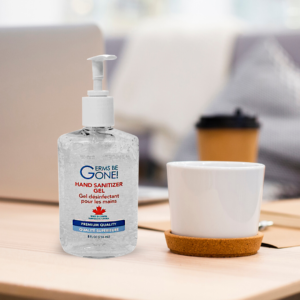As workplaces prepare to welcome back the full force of their staff, most businesses are looking to conceptualize a framework ensuring the health and security of all staff and employees. A Workplace Protection Strategy is a plan that outlines the measures taken by a company to ascertain the safety of employees – a strategy which will now need to consider new health regulations in addition to integration back into the workplace. Below we’ve highlighted some points you’ll want to consider as you begin building your own protection strategy against a post-COVID-19 workplace.
 First and foremost, you will need to consider all major and minor threats to employee safety in your workplace. If you don’t have regulations on this already, common standards may include restrictions on walking stairs with a maximum weight load, protocols for sharp tools and appliances, and safe handling of any specialized gear or equipment. The prime reason for workplace protection plans is to reduce the amounts of hazardous incidents in a workplace, as well as measures taken if an incident occurs. With COVID-19 proving as a new threat in the workplace, protection plans will need to include standards on distancing, sanitation, symptom control, and what to do in the case an employee tests positive. A quick response to pandemic protocols can help employees to feel safe and reassured in their workplaces, especially as they begin to make their way back on sites. Worker health is a serious aspect of workplace safety, so you will need to clearly communicate what measures will be taken to ensure general safety.
First and foremost, you will need to consider all major and minor threats to employee safety in your workplace. If you don’t have regulations on this already, common standards may include restrictions on walking stairs with a maximum weight load, protocols for sharp tools and appliances, and safe handling of any specialized gear or equipment. The prime reason for workplace protection plans is to reduce the amounts of hazardous incidents in a workplace, as well as measures taken if an incident occurs. With COVID-19 proving as a new threat in the workplace, protection plans will need to include standards on distancing, sanitation, symptom control, and what to do in the case an employee tests positive. A quick response to pandemic protocols can help employees to feel safe and reassured in their workplaces, especially as they begin to make their way back on sites. Worker health is a serious aspect of workplace safety, so you will need to clearly communicate what measures will be taken to ensure general safety.
Independently, governments hold their own regulations for local and provincial workplace standards that will also need to be integrated into your plan. Although we are entering stage two of reopening non-essential businesses, restrictions around gathering capacities and social distancing remain in effect. These new requirements may impact previously acceptable norms in your workplace, from prior seating arrangements to previous structures of meetings and close collaboration. With uncertainty around how long the effects of the pandemic will last, it’s best to outline any new changes to regular workflows in phases, with modified restrictions as necessary.
 As a company, you will also need to instill your own regulations specific to the COVID-19 pandemic, outlining worker safety and prevention. This means communicating schedules for any precautionary measures, such as daily workstation sanitization, distancing requirements, wiping rotations, and new structures for sharing food and supplies in office. Implement sick policies to encourage staff to either stay or work from home if exhibiting symptoms. Consider hosting training or informative sessions to educate staff on how to correctly diagnose their own symptoms and practice sanitation around the office. If possible, provide PPE like disposable masks, nitrile gloves, and protective screens where necessary for regular use. Fully restock on sanitary supplies like sanitizer and alcohol wipes before re-opening your office to confirm you have enough resources to support the volume of staff in house. Be sure to fully look into the technical feasibility of incurring these costs, as you may be able to get reimbursements on budgets for certain PPE products depending on your local legislation.
As a company, you will also need to instill your own regulations specific to the COVID-19 pandemic, outlining worker safety and prevention. This means communicating schedules for any precautionary measures, such as daily workstation sanitization, distancing requirements, wiping rotations, and new structures for sharing food and supplies in office. Implement sick policies to encourage staff to either stay or work from home if exhibiting symptoms. Consider hosting training or informative sessions to educate staff on how to correctly diagnose their own symptoms and practice sanitation around the office. If possible, provide PPE like disposable masks, nitrile gloves, and protective screens where necessary for regular use. Fully restock on sanitary supplies like sanitizer and alcohol wipes before re-opening your office to confirm you have enough resources to support the volume of staff in house. Be sure to fully look into the technical feasibility of incurring these costs, as you may be able to get reimbursements on budgets for certain PPE products depending on your local legislation.
As offices begin to re-open, Truspace is offering consultations on implementing Workplace Protection Strategies. From exploring new workspace configurations to securing PPE coverage for your office, we are offering a fully integrated plan that takes into account all the logistics of welcoming staff back to the office. For a preliminary consultation on personalized re-opening strategies, book an appointment with one of our strategists below.




